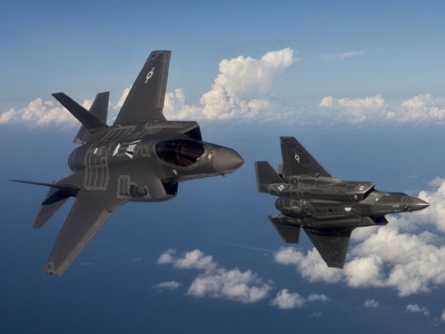Over two years have now passed since the withdrawal of Canadian combat troops from Afghanistan, one of Canada’s longest and most expensive military endeavors. The war brought about a major expansion and reinvigoration of the Canadian military in terms of its logistical and combat capabilities, while also highlighting the need for a larger and more modernized fighting force. This issue was addressed by the Canadian government in 2008, which launched a massive spending overhaul of the Canadian military, pledging to spend $490 billion over the course of the next 20 years on defence through annual spending increases. This program is known as the Canada First Defence Strategy (CFDS), with major goals that include increasing the number of military personnel to 100,000, replacing Canada’s core naval and air assets, and improving overall military infrastructure to aid the deployment of Canadian military personnel both domestically and abroad.
This large increase in expenditure comes at an important time for global military spending. While in 2008, Canada, along with numerous other Western nations, was heavily involved in the war in Afghanistan, the United States was also deeply invested in the war in Iraq. At the time, these deployments demanded a large increase in military spending in the West, but in the wake of the financial crisis and the withdrawal of many of these forces from the Middle East region, by the end of 2012 almost all Western governments had cut back on military spending. With the CFDS however, Canada now stands out as a nation that, despite austerity measures, is not reducing its military spending by such a large proportion.
[captionpix align=”right” theme=”elegant” width=”350″ imgsrc=”http://natoassociation.ca/wp-content/uploads/2013/08/cfd2.jpg” captiontext=”Canada First Defence Strategy structural organization.”]
Fiscal Realities
This has not occurred without serious reconsiderations from officials and policy makers in the Canadian government, who have labeled the CFDS as unaffordable as early as 2011. Indeed, Canadian politics have been mired by numerous controversies involving military acquisitions, most notably the controversial purchasing of 65 F-35 fighter jets that same year. In May 2012, then-Minister of Defence Peter MacKay confirmed that the CFDS was being reviewed, but later insisted that the review would have been undergone “regardless of the recession, regardless of the fiscal realities”. Nevertheless, some military spending reductions have already taken place with past budgets. Budget 2010 scaled down the anticipated growth in defence expenditures, while Budget 2012 saw no increase in funding the way the strategy stipulated, with only a slow increase for 2013-2014. These reductions will amount to about $1 billion per year beginning in 2013, a total decrease of about $16 billion for the entire program. The government has now stated that the program will be revised with next year’s federal budget.
Unparalleled Opportunity
While it is important to keep these expenditure issues in mind, the CFDS continues to offer an unprecedented opportunity to allow Canadian defence companies to establish a long term leadership position in the global defence industry, with spillover effects into the rest of the Canadian economy. The strategy’s allocation of funds for new equipment specifically is over $60 billion, which has helped stimulate the Canadian defence industry immensely.
At the same time, the global decrease in defence spending, especially in the United States, has made the business environment much more competitive. The Canadian defense industry comprises over two thousand companies, with a total annual revenue of over $12 billion. The United States plans to cut $120 billion in its defence budget by 2014, and this has led American defence companies to specialize in less expensive, niche capabilities instead of larger, more expensive systems. This has caused them to compete much more directly with Canadian companies, who for a long time have specialized in smaller platforms in American markets. The United States also accounts for about three quarters of Canadian defence exports, or one third of all Canadian production.
Finally, the boost in Canadian defence spending is very attractive for other foreign companies looking to expand their sales as their domestic markets are being scaled back. Between 2009 and 2012 Canadian defence companies comprised of about two thirds of the Department of National Defence’s market.
Legislative Solutions
These are all indications of challenges facing the Canadian defence industry, so the benefit of the CFDS, as well as measures put in place by the government to bolster Canadian industry cannot be understated. The Industrial Regional Benefits Policy is one such measure, which requires defence companies given Canadian government contracts to conduct business in Canada equivalent to 100% of the awarded contract. This helps ensure investment in the Canadian economy regardless of the national origin of the defence company.
The benefit of the CFDS goes beyond simply supporting the Canadian defence industry for the duration of the program. A report released in February of this year by the Ministry of Public Works and Government Services highlights the opportunity to use the program to “promote a long-term growth trajectory” for Canadian defence industries. It argues that by using the CFDS to help specialize in “Key Industrial Capacities”, or niche industries within the broader defence umbrella that Canadian companies have an industrial or innovative edge in, the Canadian defence industry can establish itself as a strong player in the global market. The six main industrial capacities highlighted by this approach are arctic and maritime security, cyber security, command and support, in-service support, soldier protection. This would allow for sustainable growth in the defence industry that ensures Canadian leadership in these specific areas, while also meeting the needs of the Canadian military.
Moving Forward
It is with all of this in mind that the balance between maintaining fiscal responsibility and supporting the Canadian defence industry in regards to the CFDS must be struck in a way that complements both sides. It is simply not possible to maintain the spending projections in the current economic climate, while the opportunity for defence companies cannot be wasted. The recommendations put forward by the Ministry of Public Works and Government Services is the most suitable approach to rectifying this issue. Identifying Canada’s most relevant defence related industries for funding allows for the defence industry and the Canadian economy as a whole to benefit efficiently from the Strategy even if its budget is reduced from 2008 levels.




